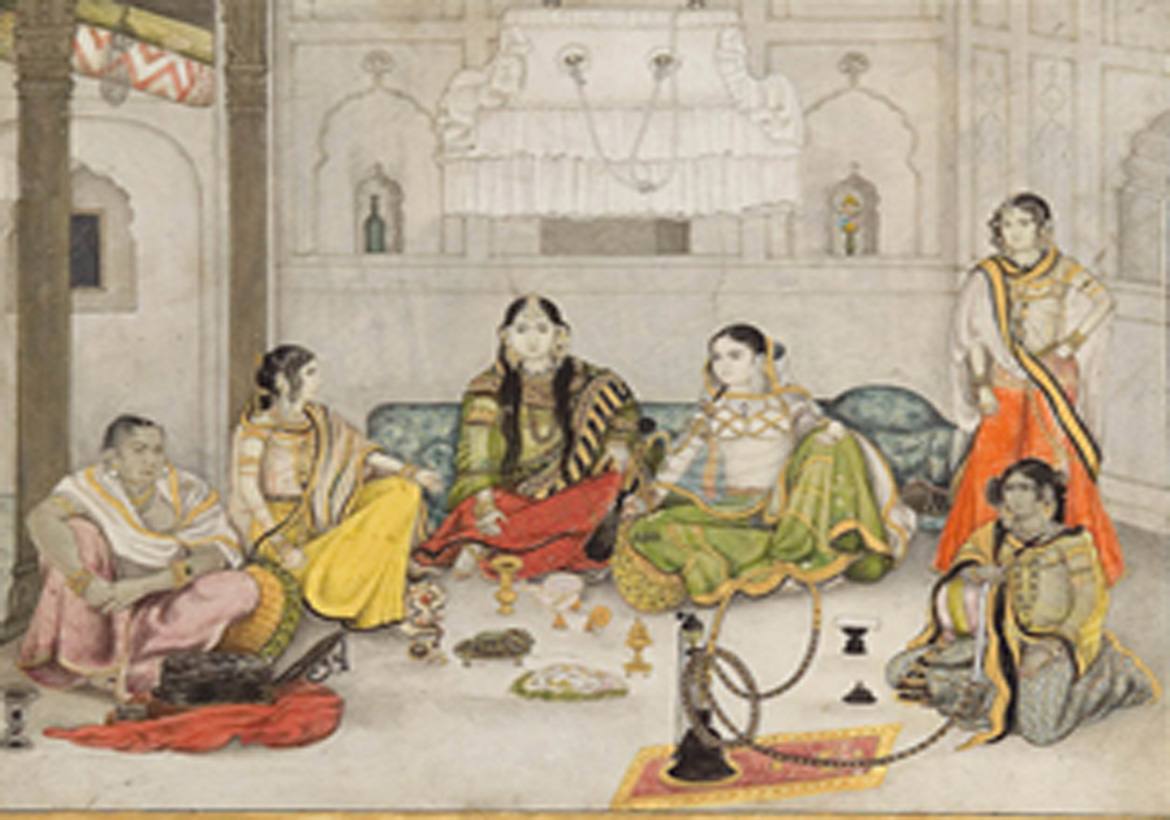The Company style of paintings became common, created by Indian artists working for European patrons of the East India Company. British colonial rule had a great impact on Indian art. Indian artists welcomed the opportunity to work for their new British patrons, especially because the traditional patronage of Indian rulers and their courts was rapidly declining. Old patrons of art became less wealthy and influential, and Western art more ubiquitous as the British Empire established schools of art in major cities. The style was mainly Romanticized, By1858, the British government took over the task of administration of India under the British Raj. The fusion of Indian traditions with European style at this time is evident from Raja Ravi Verma’s oil paintings of Indian women in a graceful manner.
Company style or Company painting (style of paintings made in India by Indian artists, many of whom worked for European patrons in the British East India Company or other foreign Companies in the 18th and 19th centuries. The paintings were executed with water colour the primary medium used to convey soft textures and tones.The style blended traditional elements from Rajput and Mughal painting with a more Western treatment of perspective, volume and recession. At the same time, they took care to preserve traditional elements. Most paintings were small, reflecting the Indian miniature tradition.

. Favourite. Their favourite subjects were subjects were scenes of Indian daily life, local rulers, and sets of festivals and ceremonies, historic monuments with their novel architecture, people of different classes in colourful costumes, festivals and rituals, crafts and occupations, different mores of transport, and nautch girls.


